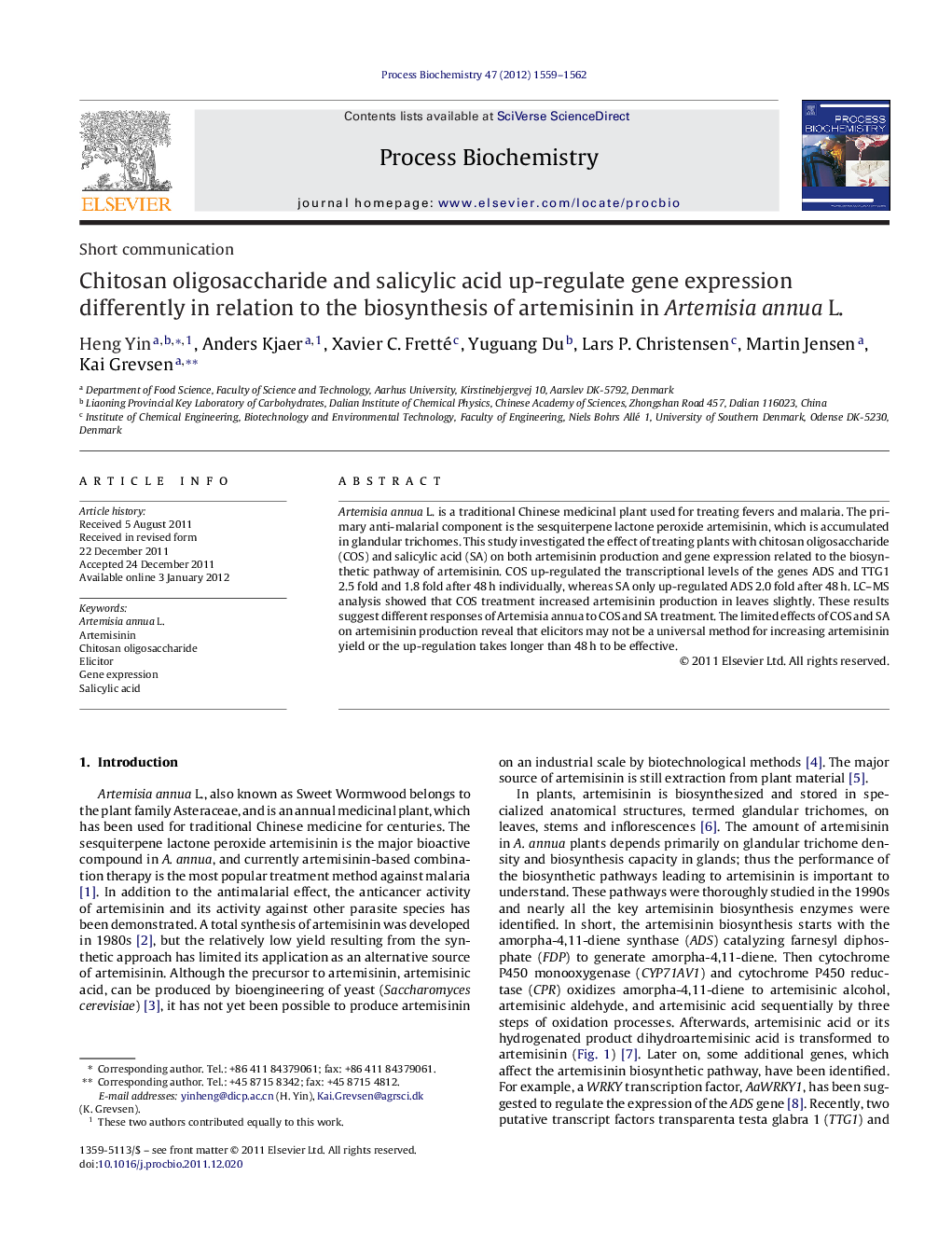| Article ID | Journal | Published Year | Pages | File Type |
|---|---|---|---|---|
| 34761 | Process Biochemistry | 2012 | 4 Pages |
Artemisia annua L. is a traditional Chinese medicinal plant used for treating fevers and malaria. The primary anti-malarial component is the sesquiterpene lactone peroxide artemisinin, which is accumulated in glandular trichomes. This study investigated the effect of treating plants with chitosan oligosaccharide (COS) and salicylic acid (SA) on both artemisinin production and gene expression related to the biosynthetic pathway of artemisinin. COS up-regulated the transcriptional levels of the genes ADS and TTG1 2.5 fold and 1.8 fold after 48 h individually, whereas SA only up-regulated ADS 2.0 fold after 48 h. LC–MS analysis showed that COS treatment increased artemisinin production in leaves slightly. These results suggest different responses of Artemisia annua to COS and SA treatment. The limited effects of COS and SA on artemisinin production reveal that elicitors may not be a universal method for increasing artemisinin yield or the up-regulation takes longer than 48 h to be effective.
